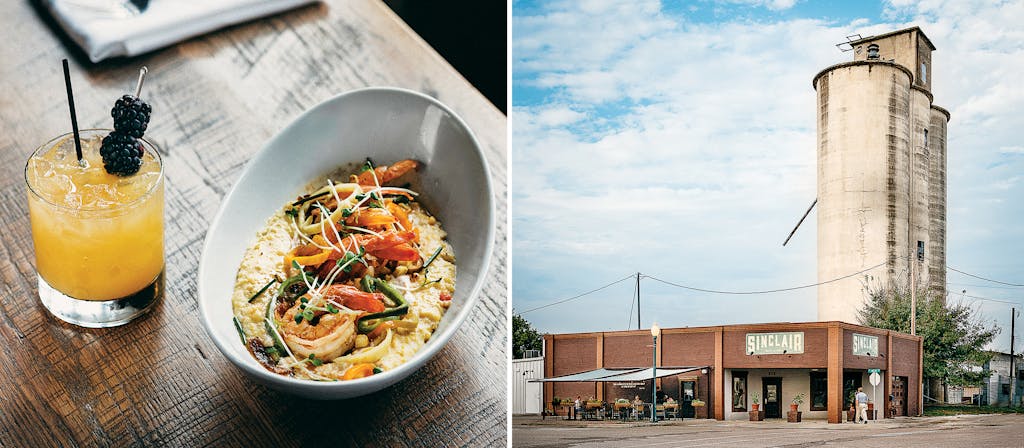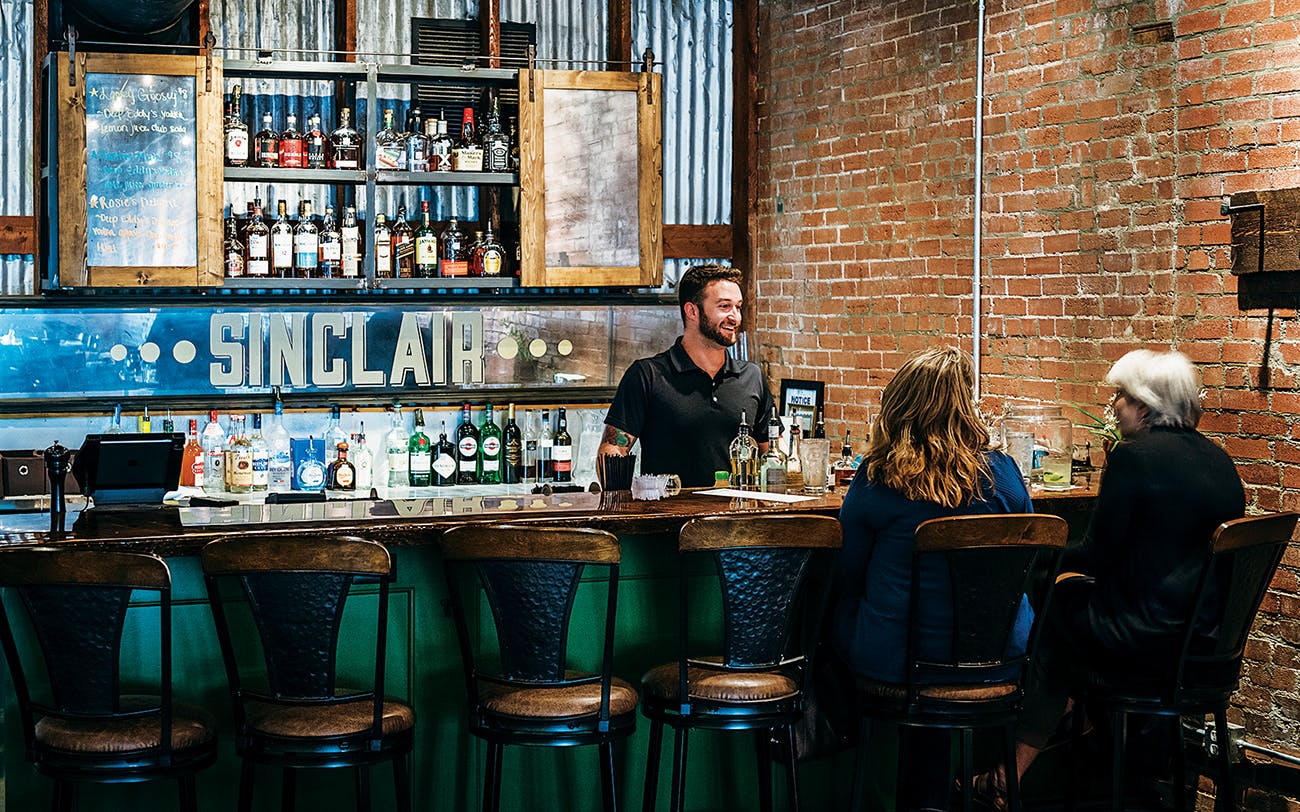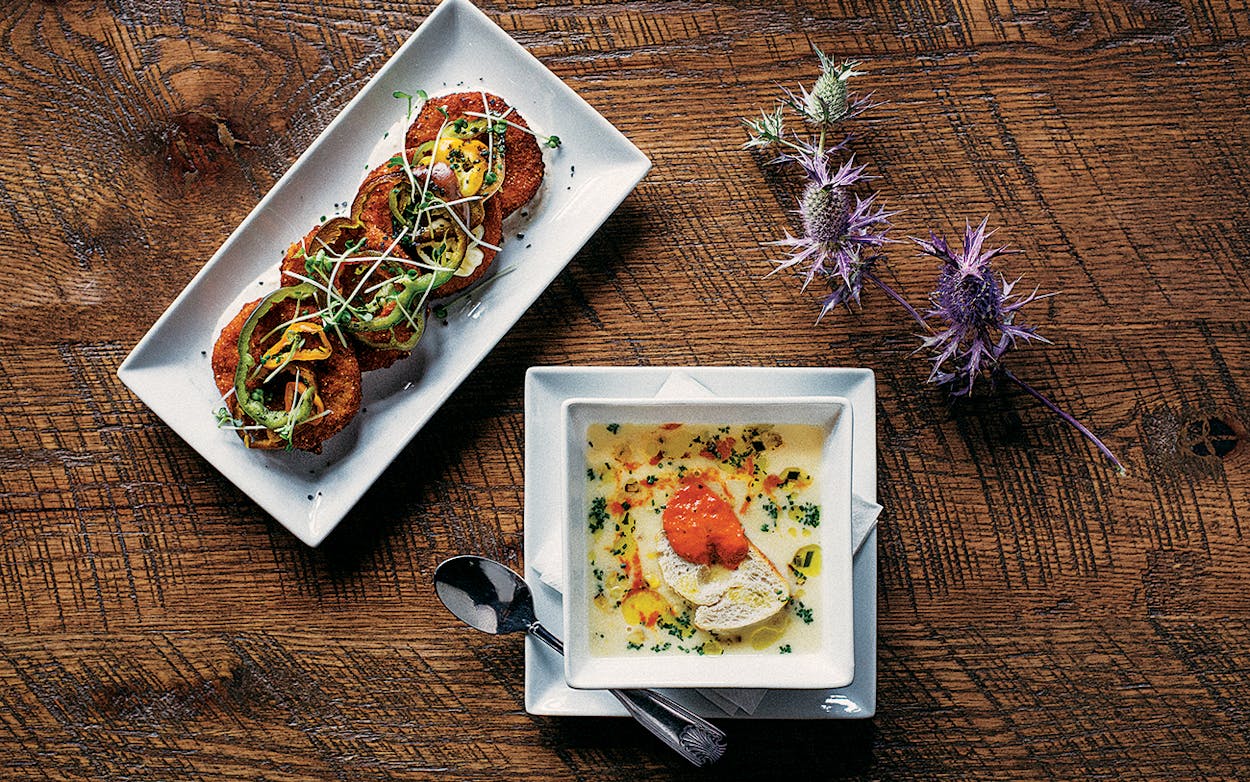This article appeared in the November 2017 issue of Texas Monthly with the headline “Big Flavors, Tiny Town.”
I don’t usually put much stock in mysterious happenings, but some serious culinary mojo has been at work in the heart of Texas the past two years: in that time, two little-bitty Central Texas towns have turned into creditable dining destinations. Not only that, both of their names begin with C and end with N (cue eerie music). The trend started in 2015, when Coleman (population: 4,431) acquired a pizzeria-cum-Thursday-night-steakhouse, followed later by a winery with a tapas bar. In April of this year, Clifton (3,392) edged into the spotlight with the opening of Sinclair, a farm-to-table venue in an old gas station. Why am I obsessing over the coincidence? Because discovering quality dining in small towns is like finding the Holy Grail, Montezuma’s treasure, and the fountain of youth all in the same location. When not one but three eateries open in appealing towns within a mere 23 months, I get excited. Marfa’s been getting all the love for way too long.
And that is why I found myself turning off Interstate 35 northwest of Waco a couple of months ago, en route to meet my friend June for dinner in Clifton. Arriving with time to kill, we went shopping, first at the quaint Bosque County Emporium and then the Market at the Mill, a rambling home accessories and gift store. Famished from impulse purchasing, we then headed across the street to claim our reservations.
Sinclair occupies a one-story brick building, spare but welcoming. Its orangey brick walls are hung with old black-and-white photos, and on our early-fall visit, each wooden table held a vase of purple thistles. A similar feeling of simplicity is evident on the menu, which is the creation of executive chef Sonya Coté. As many Austin diners know, Coté is the free spirit behind Hillside Farmacy and Eden East, the latter literally located on an urban farm. She has a passion for supporting local growers, so her presence in Clifton is definitely in character, if unexpected. She explains, “My partner David Barrow happens to know Curtis and Kaye Robinson Callaway,” who are the force behind the restaurant. For about the previous five years the location had been the home of a steak and seafood house named Mitchell’s Grille. Eventually, however, Kaye decided she wanted to try a farm-to-table concept. She asked Coté if she would like to be partners in such a place. The chef didn’t even have to think twice.

Coté’s devotion to all things local is on display in the first item on the menu, the Big Texas Cheese Sampler, featuring a wedge of Brazos Valley smoked Gouda, a lush Honey Doe chèvre, and more, alongside various pickled vegetables. We almost ordered it, then considered the chicken-fried quail legs with buttermilk aioli. But ultimately we opted for the fried green tomatoes. It would have been hard to improve on them: four tidy slices had been expertly fried in snug cornmeal jackets and presented atop a puddle of blue-cheese vinaigrette (a.k.a. homemade ranch, which proved to be ideal for mopping-up operations). Moving on to soups and salads, we split the Sinclair, a pretty toss of baby lettuces, Brazos Valley feta, and ruby-fleshed green figs under a drizzle of balsamic, and shared a bowl of the excellent sweet-corn chowder splashed with chile oil.
Meat is seriously represented on Sinclair’s menu in the form of a Berkshire pork chop and two Texas Black Angus steaks, but we were curious to see how the kitchen handled fish and fowl. The answer to that question was quickly apparent. Two filets of Gulf black drum had been seared to make the skin puff up as if it had been battered, while the snowy flesh stayed flaky and grease-free; the plate was rounded out with a trove of sautéed okra and tomatoes and a cake of superlative coarse-textured yellow grits. The Texas quail, our other entrée, had been cooked sous-vide and then browned. As good as they were, though, we agreed that the best part of the dish was the accompanying acorn squash and sweet potatoes, baked to melting tenderness and conjuring, for me at least, rose-colored memories of Girl Scout cookouts past.
The next day we were back for brunch, saying hi to staffers whom we’d seen only hours before. The menu that morning had nine choices, ranging from Eggs Benny to the Killer Wedge Salad, but we were persuaded by the eight-ounce burger. Made from Black Angus beef from nearby 44 Farms, it succeeded in spite of a patty that didn’t quite fill out its excellent brioche bun and was overcooked to boot. It was a testament to the quality of the meat and Coté’s homemade pickled-green-tomato relish that it tasted fantastic despite the flubs. But our favorite dish was the chili, presented atop grits and made with smoked Anaheims, jalapeños, and any other peppers that Coté and her crew can find at the farmers market. We skipped dessert, both because we were full and because the two we’d tried the night before had been so sweet they made my teeth ache. They had sounded homey and good—both the candied-pecan bread pudding and the Autumn Crumble with fresh fruit—but they desperately needed something in the way of texture and tartness to perk them up.

After my visit, I chatted with Coté and asked what’s on the horizon. She said she continues to be on the prowl for new farmers and producers. She also confirmed that a new on-site chef, Kim Mullins, will soon take over the kitchen. As for the future, she said that the Callaways have big plans to start supplying the restaurant with beef, produce, and honey from their own land. Until then, everybody’s keeping on keeping on. That sounded good to me. Not only do I want Sinclair to be around for a long time, I’m hoping that other folks will be inspired by its example. How great would it be to have dining destinations in other small Texas towns, whether or not their names start with C and end with N.
- More About:
- Pat’s Pick









